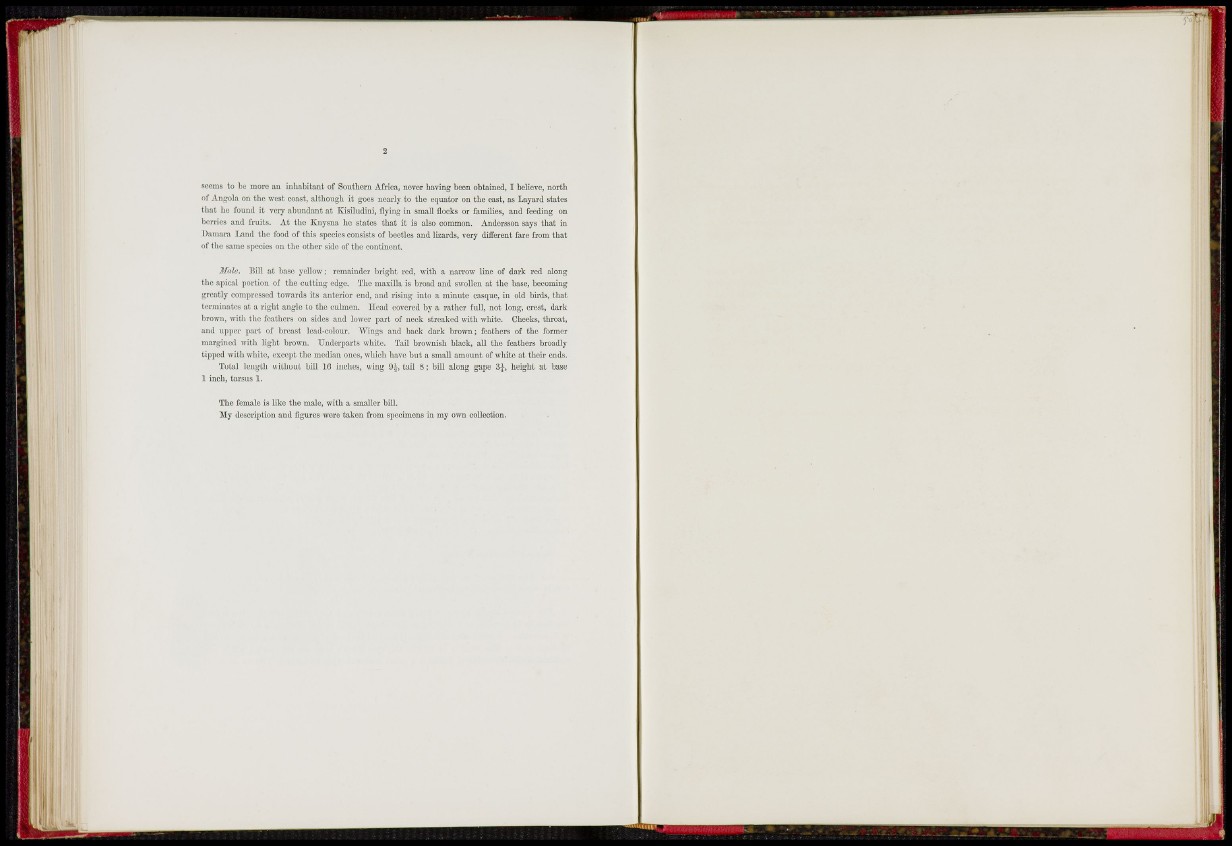
seems to be more an inhabitant of Southern Africa, never having been obtained, I believe, north
of Angola on the west coast, although it goes nearly to the equator on the cast, as Layard states
that he found it very abundant at Kisiludini, flying in small flocks or families, and feeding on
berries and fruits. At the Knysna he states that it is also common. Andersson says that in
Daiuara Land the food of this specics consists of beetles and lizards, very different fare from that
of the same species on the other side of the continent.
Male, liill at base yellow; remainder bright red, with a narrow line of dark red along
the apical portion of the cutting edge. The maxilla is broad and swollen at the base, becoming
greatly compressed towards its anterior end, and rising into a minute casque, in old buds, that
t(!rminatcs at a right angle to the culmen. Head covered by a rather Cull, not long, ci-est, dark
brown, with the feathers on sides and lower part of neck streaked with wliite. Cheeks, throat,
and upper part of breast lead-colour. "Wings and back dark brown; feathers of the former
margined with light brown. XTnderparts white. Tail brownish black, all the feathers broadly
tipped with white, except the median ones, which have but a small amount of white at their ends.
Total length without bill 10 inches, wing 9J-, tail 8; bill along gape height at base
1 inch, tarsus 1.
The female is like the male, with a smaller bill.
My description and figures were taken from specimens in my own collection.
SB